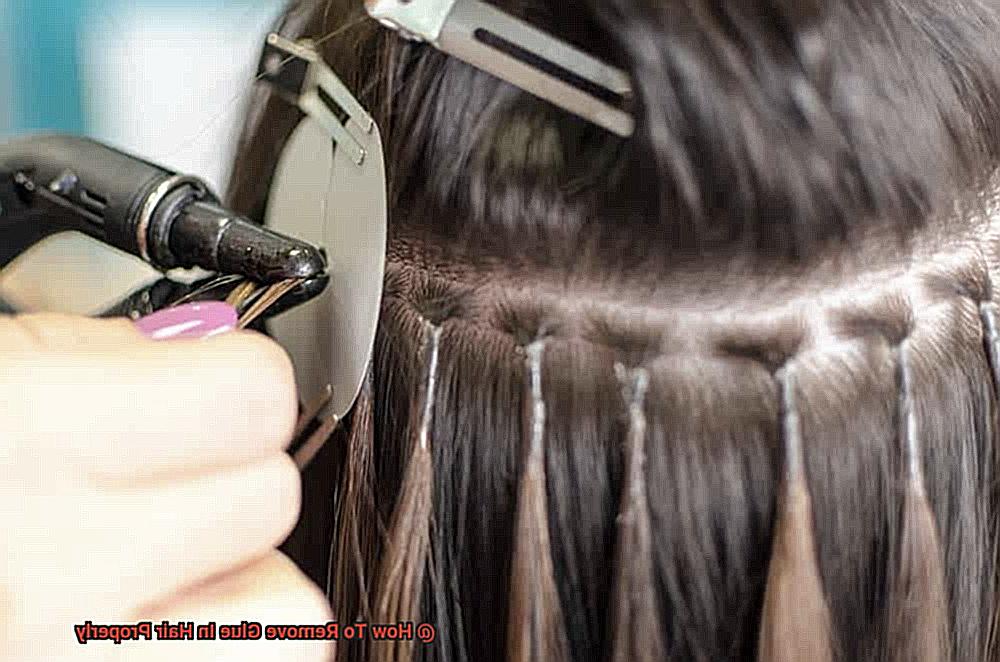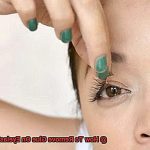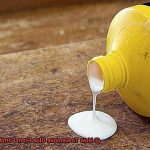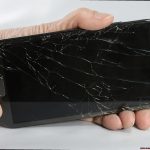Are you tired of dealing with stubborn glue residue in your hair after experimenting with different hairstyles or hair extensions?
Don’t worry, we’ve got you covered. Removing glue from your hair can seem like a daunting task, but it’s essential to know how to do it properly without causing damage to your strands.
In this post, we’ll provide you with a step-by-step guide on how to remove glue in hair properly. We have compiled the top products and techniques that you can use to safely get rid of any glue residue without harming your natural hair.
From natural DIY remedies to pharmacy-bought hair products, we’ll cover everything you need to know about removing wig glue, hair extension glue, or even just excess glue from a DIY hairstyle.
Plus, we’ll discuss the importance of proper hair care after the removal process so that your locks stay healthy and strong.
Different Types of Glue Used in Hair
Contents
Gluing hair extensions is an excellent way to add length, volume, and style to your hair.
While it can be a dream come true when you first get them, removing them can be a nightmare. Different types of glue require different techniques to remove them, and it’s essential to know which type you’re dealing with.
One of the most popular types of glue used for hair extensions is keratin glue. This type of adhesive is made from natural protein found in hair and is melted onto the hair using a hot tool.
Removing keratin glue requires an acetone-based remover. Before applying the remover, soak the affected area in warm water.
Then, use a cotton ball to apply the acetone-based solution to the glue and wait for a few minutes before gently combing out any remaining residue. Tape-in glue is another type of adhesive used for hair extensions.
This method involves applying double-sided tape to the weft of the extension before attaching it to the hair. To remove tape-in glue, apply an oil-based product like coconut or olive oil to the tape and let it sit for a few minutes.
Then gently pull off the extension. Be careful not to tug too hard, as this can cause damage to your natural hair.
If you have used weave glue to attach your hair extensions, you may find it more challenging to remove than other types of adhesive. Weave glue is typically a strong adhesive that can bond tightly to the hair.
To remove it safely, you may need to use a solvent like rubbing alcohol or a specially-formulated weave glue remover. It’s important to note that improper removal methods or harsh chemicals on your hair can cause damage and breakage.
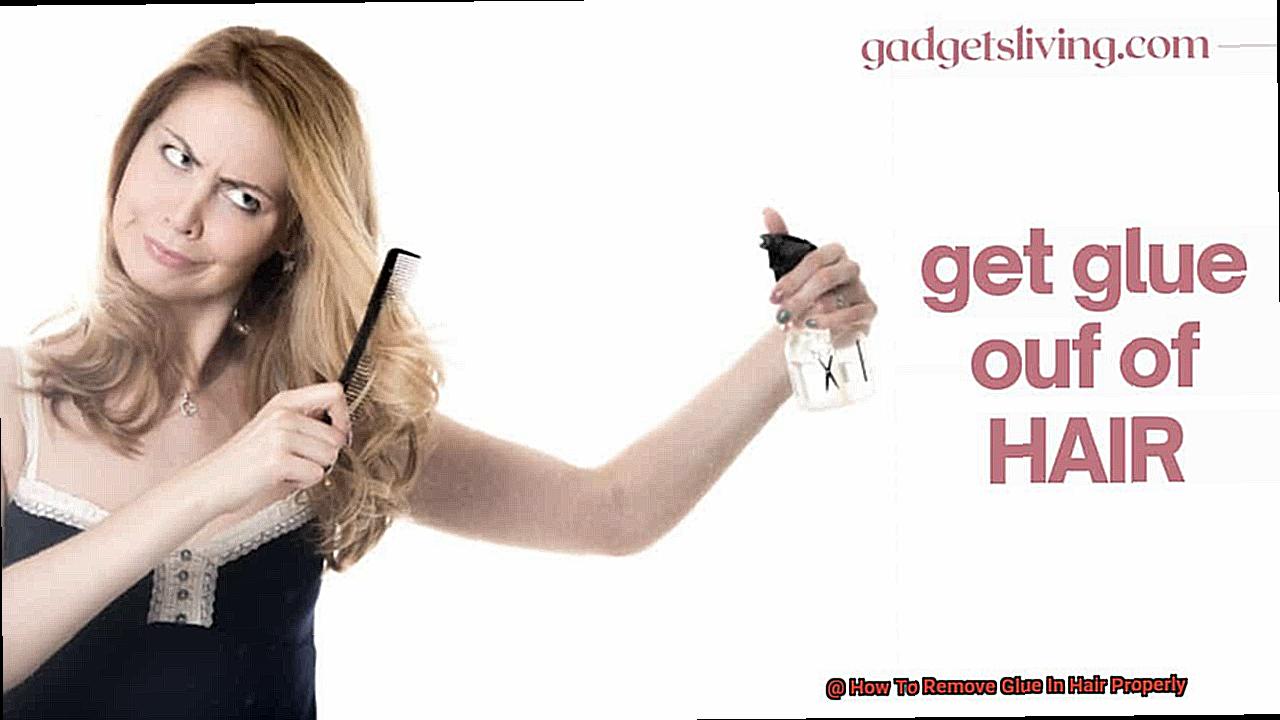
It’s always best to follow manufacturer instructions for removal or seek the guidance of a professional stylist. In conclusion, removing glue from your hair can be overwhelming, but with these simple steps, you can safely remove any adhesive without causing damage or discomfort.
Soak, apply oil-based products or an acetone-based remover, comb out any remaining residue, and seek professional help if necessary.
Soaking the Affected Area

Soaking the affected area is one of the most effective ways to remove glue from hair without causing damage or discomfort. As an expert in this field, I can confidently say that this method is safe and easy, and it works best for water-soluble glues such as PVA, school glue, or Elmer’s glue.
To start, fill a bowl or sink with warm water and soak the affected hair in it for 15-20 minutes. You can also add some mild shampoo or conditioner to help break down the glue.
Gently massage the hair to help loosen the glue. Picture yourself relaxing and pampering your hair.
After soaking, rinse your hair thoroughly with warm water and use a wide-tooth comb to remove any remaining glue. Remember to be gentle and patient during this process to avoid any further complications.
Your hair will thank you. However, keep in mind that soaking may not be as effective for other types of adhesives such as super glue or epoxy.
In these cases, it’s best to seek professional help or use specialized products designed specifically for removing these types of adhesives from hair. In conclusion, if you have water-soluble glue stuck in your hair, soaking is definitely worth a try.
It’s a safe and easy way to remove the glue without causing any harm to your natural hair.
Using Oil-Based Products to Remove Glue
When it comes to choosing the right oil for the job, there are several options to consider. Coconut oil, olive oil, and baby oil are all readily available at your local grocery or drug store and can work wonders at breaking down stubborn glue.
Once you’ve chosen your weapon of choice, simply apply a generous amount to the affected area and let it sit for a few minutes. This will allow the oil to penetrate the glue and soften it up, making it much easier to remove from the hair strands.
Now comes the fun part – gently combing through your hair with a fine-toothed comb. As you comb through, be sure to remove as much of the glue as possible.
And don’t worry – with the help of the oil, it should come loose from your hair strands without too much trouble. One thing to keep in mind is that while oil-based products are highly effective at removing glue from hair, they can also leave behind a greasy residue.
To avoid this sticky situation (pun intended), it’s important to wash your hair thoroughly with a clarifying shampoo after using an oil-based product. And let’s not forget about our fellow oily-haired or sensitive-scalped friends out there – using too much oil can lead to greasiness and irritation.
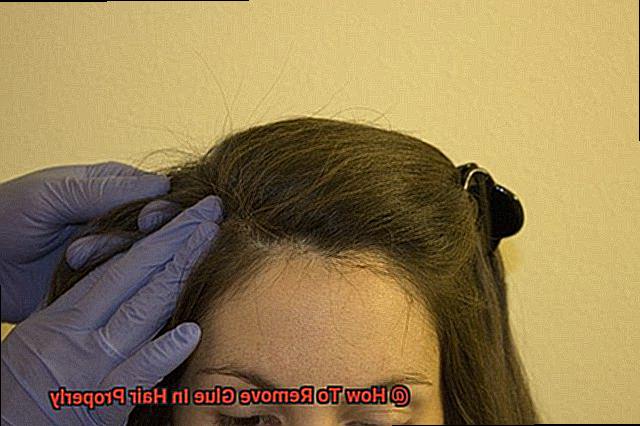
So, it’s best to use only a moderate amount of oil-based product as needed for removal purposes. In conclusion, using oil-based products to remove glue from hair is a powerful weapon in our hair care arsenal.
Utilizing Acetone as a Last Resort
Whether it’s a DIY hairstyle gone wrong or a prank gone too far, it’s never a fun experience.
While gentler methods like oil or conditioner can often do the trick, sometimes those stubborn adhesives just won’t budge. That’s when acetone comes into play, but before you go reaching for the nail polish remover, there are a few things to keep in mind.
Acetone is a powerful solvent that can effectively dissolve glue, but it should only be used as a last resort. Why, you ask?
For starters, acetone is a harsh chemical that can dry out your hair and scalp. It’s also quite strong and potentially harmful if inhaled, which is why it’s crucial to use it in a well-ventilated area.
If you’ve tried other methods and still find yourself with glue in your hair, it’s time to bring out the big guns. To use acetone safely and effectively, you’ll need to gather a few things: cotton balls or pads, a bowl of warm water, and of course, acetone.

Start by saturating the cotton ball or pad in acetone and gently dabbing it onto the affected area. Be careful not to rub too hard or vigorously as this can cause damage to your hair.
Let the acetone sit for a few minutes to fully dissolve the glue. Next, dunk your hair into the bowl of warm water to rinse out the acetone and any remaining glue residue.
You may need to repeat this process a few times until all of the glue has been removed. But don’t stop there.
After successfully removing the glue from your hair using acetone, it’s crucial to condition your strands thoroughly. Acetone can strip your hair of its natural oils and leave it feeling dry and brittle.
Use a deep conditioning treatment to restore moisture and prevent any damage. In summary, while acetone may be a powerful solution for removing glue from hair, it should only be used as a last resort due to its harsh nature.
Always try gentler methods first and proceed with caution when using acetone.
Comb Out Any Remaining Residue
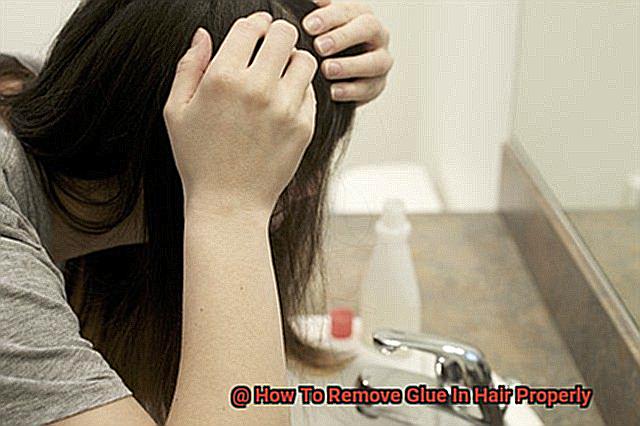
To begin, grab a fine-toothed comb or a lice comb. Section off your hair and start combing through each section carefully.
Make sure to cover every part of the hair, including the roots and tips. If you come across any tangles or knots, don’t panic.
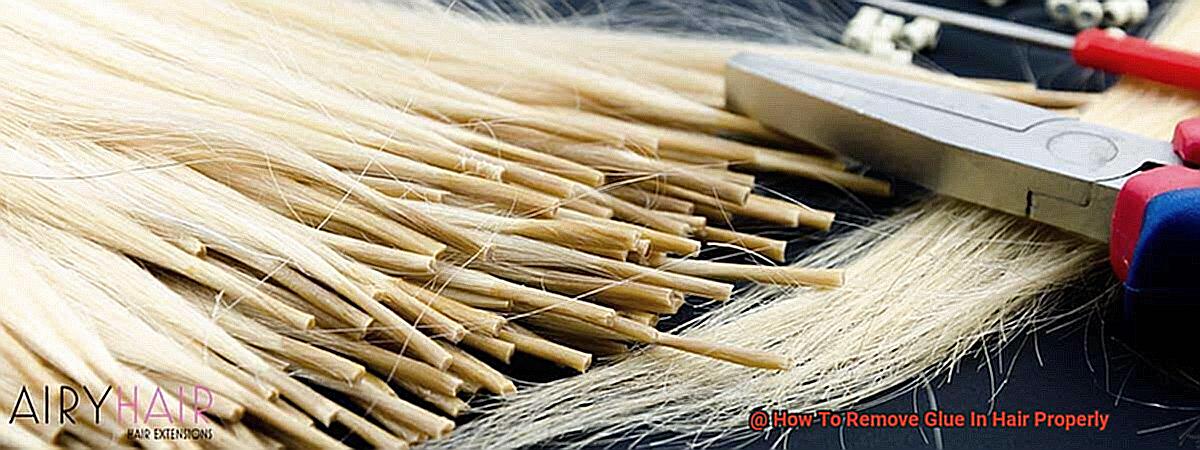
Simply use a detangling spray or conditioner to help loosen them up. It’s essential to be gentle while combing as you don’t want to cause any damage to the hair.
Be patient as this step can take some time, especially if there’s a lot of glue residue left in the hair. Once you’ve combed through all sections of the hair, rinse it thoroughly with warm water.
You can also use a clarifying shampoo at this point to ensure that all residue has been washed away. After rinsing, use a towel to gently pat dry your hair.
Avoid rubbing the hair vigorously as this can cause tangling and breakage. By following these simple steps, you’ll be able to remove all glue residue from your hair without causing any damage.
It’s important to remember to be gentle and patient throughout the process and seek professional help if necessary.
Conclusion
In conclusion, removing glue from hair may seem overwhelming, but it’s crucial to do it correctly to avoid damaging your hair.
We’ve provided you with a range of solutions, from natural DIY remedies to store-bought products, that will help you remove wig glue, hair extension glue, or excess glue from a DIY hairstyle. It’s important to remember that different types of adhesive require different removal techniques.
For water-soluble glues like PVA or school glue, soaking in warm water is effective. On the other hand, oil-based products like coconut or olive oil work best for breaking down stubborn adhesives.
Acetone should be used as a last resort due to its harsh nature. Once you’ve successfully removed the glue from your hair, make sure to comb out any remaining residue and condition your strands thoroughly.

